At first light we
were in the air, and we escorted our convoy to Hue-Phu Bai for refueling. It was here
that we got the word that our final destination was to be Quang Tri. The Imperial City
of Hue and the Perfume River had filled the news before I came into the Army and I knew
if I was headed north of it, my shit was weak.
We arrived at Quang Tri on
the afternoon of Friday, January 29, 1971 and immediately began
setting up shop. We
were assigned a large, dirt, overflow area on the extreme northeast side
of the active to
park our birds and set up the maintenance tents. We were fortunate, in a way,
to be given an
unfinished orphanage on the northwest of the active to set up our company area.
The Marines
had built it, but got moved out prior to its final completion. My recollection was
that the only thing
it lacked was a paved parking lot. The newly constructed cement structure
housed all the crews,
with the pilots pitching 12 man tents (GP what-ever's) around the
immediate outside of the main
structure.
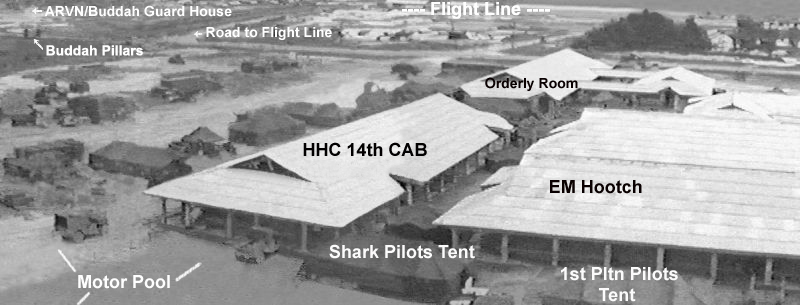
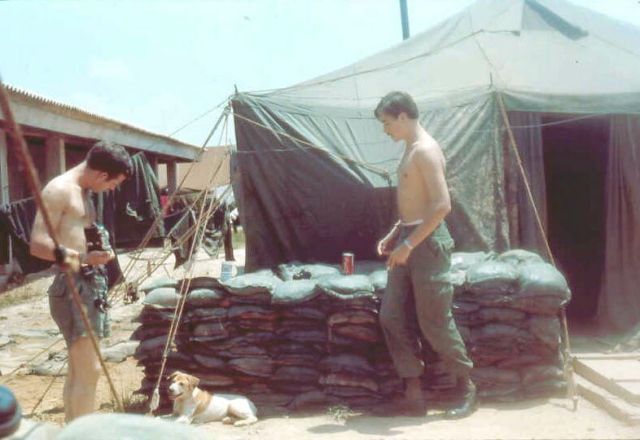
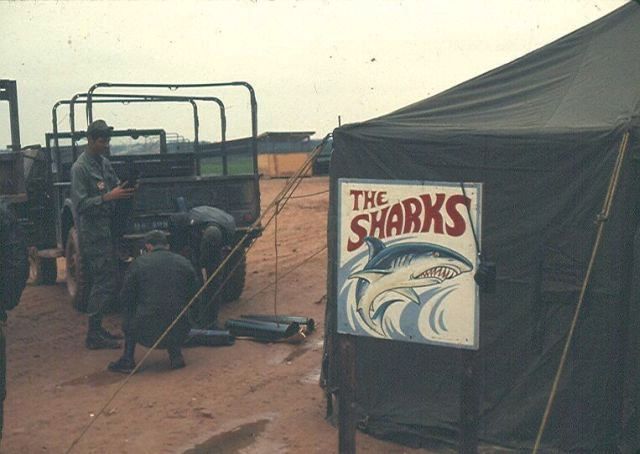
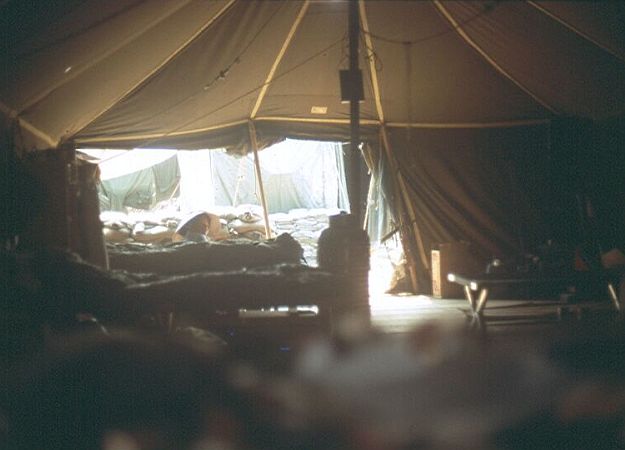

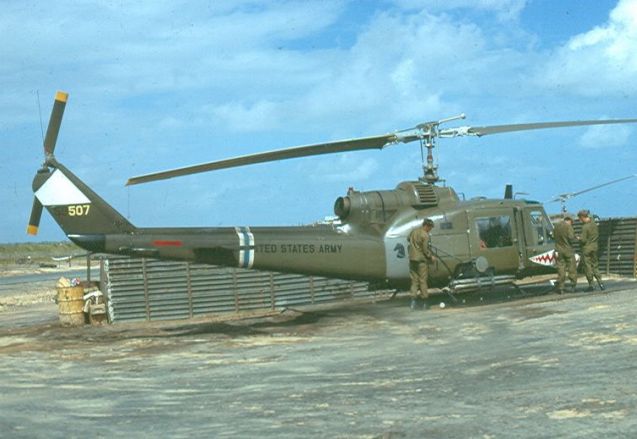
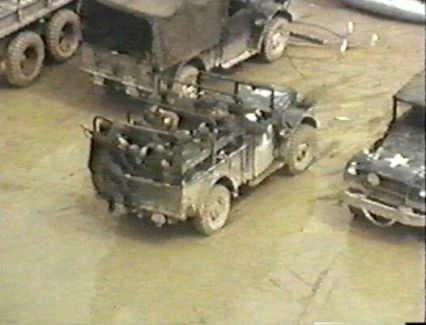
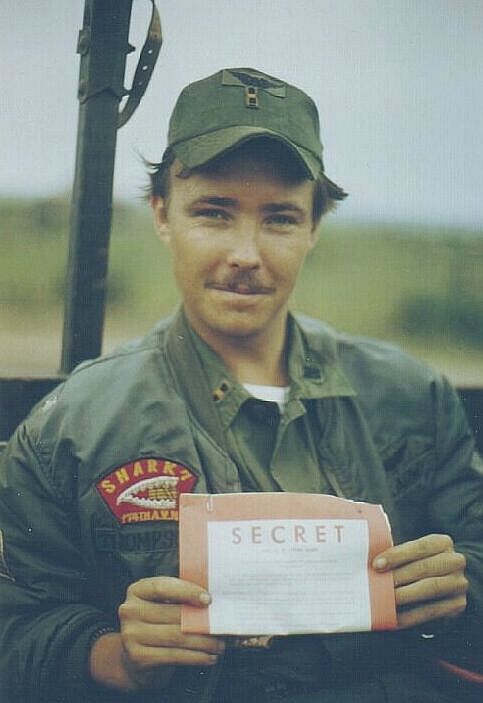
Top to Bottom: First photo is of our area at Quang Tri and our "living quarters."
This area was NE of “active” of the base. Next down left is Marshall and I teaching our dog/mascot to
"lay". Right of that are
some Sharks "shoring-up" our tent. Down to the fifth photo left is
inside our "spacious palace".
Right of that photo is Yogi Reeves (foreground) with #242 "The 2nd
Easy Rider"at our airfield...
Same with the next down left (photo seven) is #507 "Have Gun Will
Travel".
The flight line was
on the NW of the "active" area, so we had to go by truck a/o jeep to
get to the aircraft (photo eight).
Bottom photo is the reason Lam Son 719 was not a surprise
to the enemy. My Mother wrote to
Gen. Vo Nguyen Giap, and told him that we were coming and
"not to mess with her Son"
(chuckle Chuck).
We had one full day to unload
and set up camp before scheduled missions began. Sunday morning of January 31st we were
westbound out of Quang Tri with two fire teams, enroute to Khe Sahn. I was with Cpt Ackerman and was just about terrified. I think we all were.
We refueled at a small Special Forces camp called My Loc and headed up into the mountains. It was surprisingly quiet, yet incredibly beautiful. For us, it was flying into the total unknown. The whole area was magnificently huge with grand terrain features. It looked as a giant vacant movie set. We flew up QL 9 (Highway 9) past the Rockpile and Vandergrif. We snaked along the river towards the Khe Sahn plain, doing a VR (visual recon) for probable ambush locations. There was a total absence of activity everywhere those first few days as we were some of the first arrivals. The place was absolutely eerie.
We began by flying CA escorts out of Khe Sahn the first days. We were moving American troops to hilltop, jungled positions, all along the tri-borders of Laos, North Vietnam and South Vietnam. It was part of the build up operation termed as Dewey Canyon II.
No one really knew the game plan yet, but speculation among the crews was rampant. The odds-on scenario had us or the ARVN (South Vietnamese) involved in a full on invasion of the north as the DMZ was within eyesight.
Yes, this just couldn't be good. Everywhere we flew those first days was brand new to us. And as the days past, the ground, roadways and airways became increasingly thicker with personnel on the move. As the term went, you really had to keep your head on a swivel to keep from becoming a "friendly" statistic. It soon became evident to everyone involved, from top to bottom, that an operation of this scale was a logistical nightmare and not without major blunderings and sacrifice.
The slick drivers became aware of the grunts malcontent over getting dropped off in the middle of a no-man's land and then not getting re-supplied and mail delivered due to uncoordinated flight scheduling, a shortage of aircraft, or no pilots to fly them. Guys with previously cut orders for R&R's, leaves and DEROS's got hosed in the process.
And then, with all that confronting the planners, the weather went completely south. Dense fog and rain turned roads and especially QL-9 into mudhole traffic jams. The engineer people had to work around the clock to keep the roads opened and the equipment rolling. The opportunity for Charlie to reek a whole lot of pain and havoc was present, but in reality, he was crippled by the same elements of nature.
There were a few days that we sat in the aircraft at Quang Tri, just waiting for a break in the
fog. It didn't keep the Air Force guys from flying men and equipment into Quang Tri and Khe
Sahn, but it kept a whole lot of helicopters from pulling missions up into the mountains. With
the rain and fog, we were re-introduced to the mildew stench. The only silver lining for some
of us was the chance to briefly reunite with the occasional flight school buddy from the different aviation units, as we crossed paths.
When there were breaks in the weather, there was plenty to do. Field units started getting
into minor skirmishes, and with that came wounded. Dust off and Medevac aircraft experienced
some enemy fire and soon we were escorting them in and out of PZ's (pickup zones), between the
combat assaults and "hot" re-supplies.
Mechanized units were present everywhere. Giant steel wagon trains would circle their numbers
for night defensive positions. There was a full 24-hour-a-day movement of men, trucks, planes
full of equipment and supplies being moved north to Quang Tri and west towards Khe Sahn. By
February 6th and 7th, Khe Sahn was not only abuzz with helicopters and vehicles; but it was
crawling with media-news people, clamoring for stories and photos.
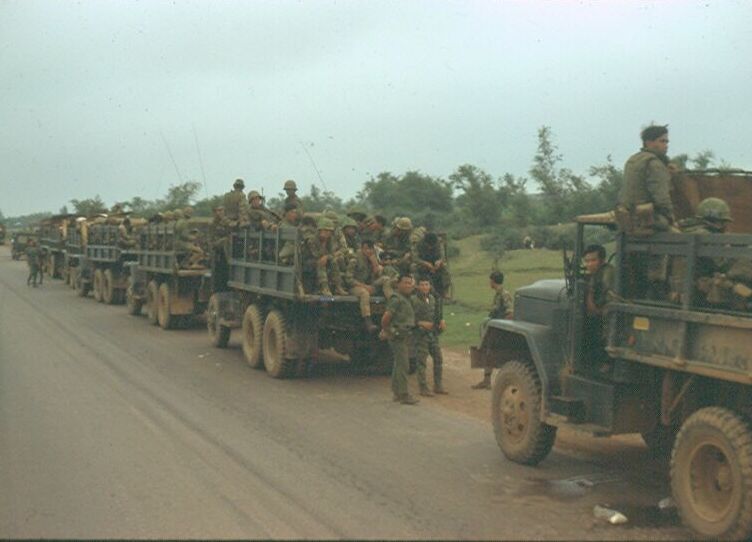
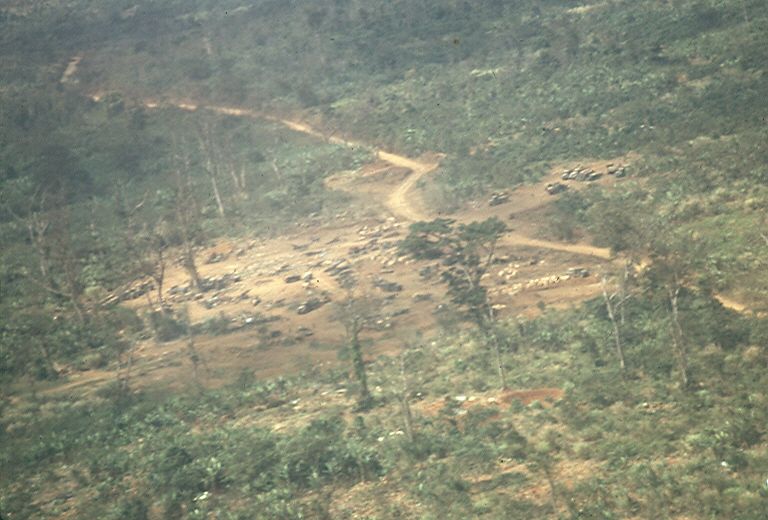
Above L-R: The vital role of the US and the ARVN
(prelude to Lam Son 719), was to re-open Route 9 (QL9) into Laos. The mis-communication
caused mass pile-ups of
mechanized vehicles. The left photo shows
a very rare occasion when the ARVN pulled off the road to allow US Mech to pass through.
The right photo is the staging point off QL9 near Vandergrift, that turned into a one way road
in and out to QL9. Hundreds of vehicles "jockey" for position.
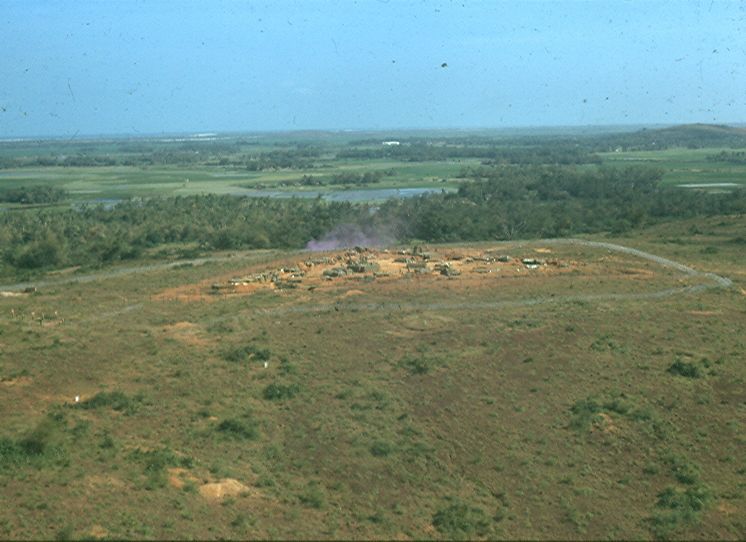
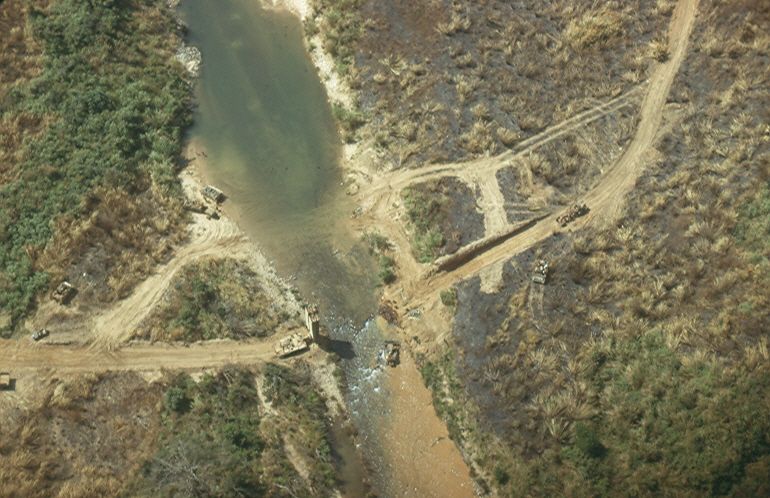
Left: Action from the 1/77th Mech
near Laos
Border- Feb 1971. Right: Bridge blown and had to be rebuilt on QL9.


Khe Sanh Feb 1971. Though
they appear
"rag-tag", these guys of the 5th Mech were serious and professional. Right: Shark flying over
the "Rockpile". Both photos- Feb 1971.
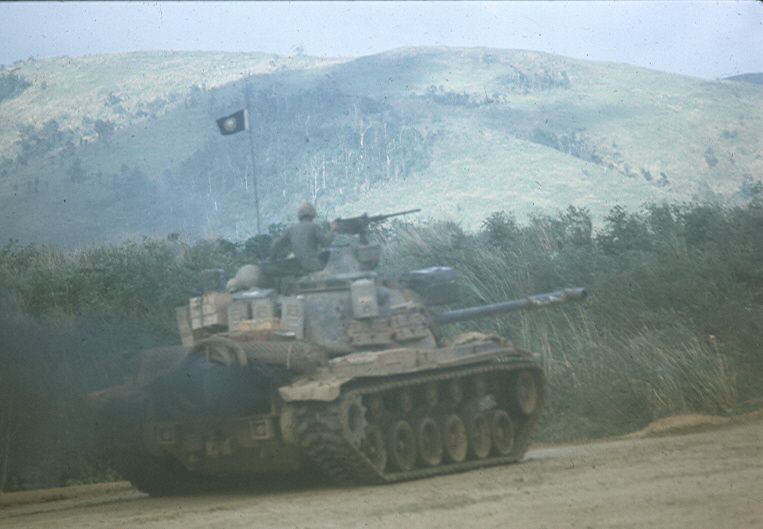
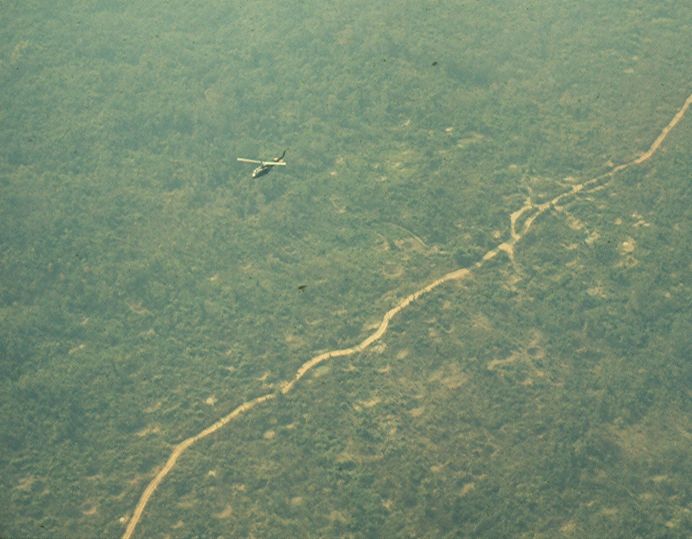
Left: An M48 on Vandergrift's path.
Right: Shark flying over (Laos) Ho Chi Minh Trail 2/71.
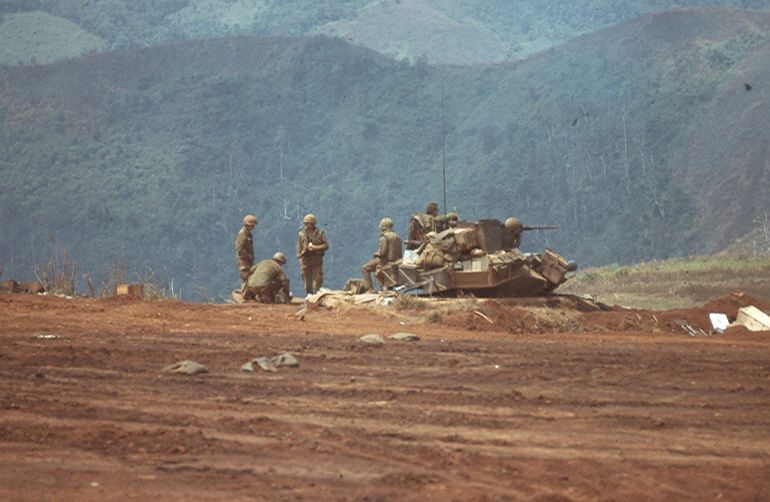
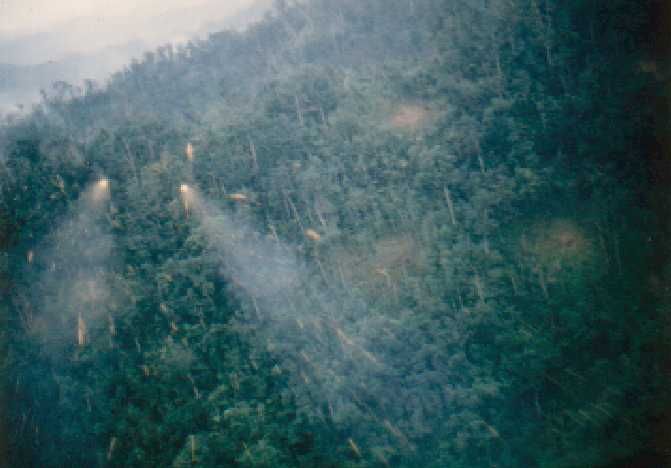
Left: Another pic of the 5th Mech at Khe Sanh 2/71. Right: We're firing rockets into LZ Scotch
on
enemy reported near the Rockpile/Emerald City. I think/know we were successful.
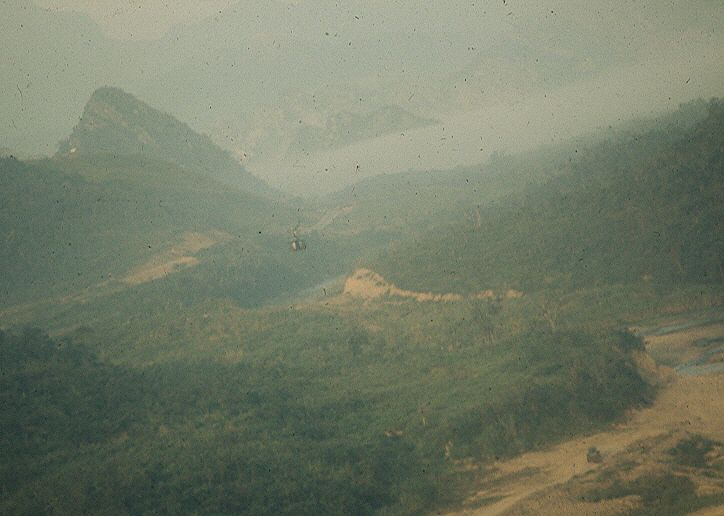
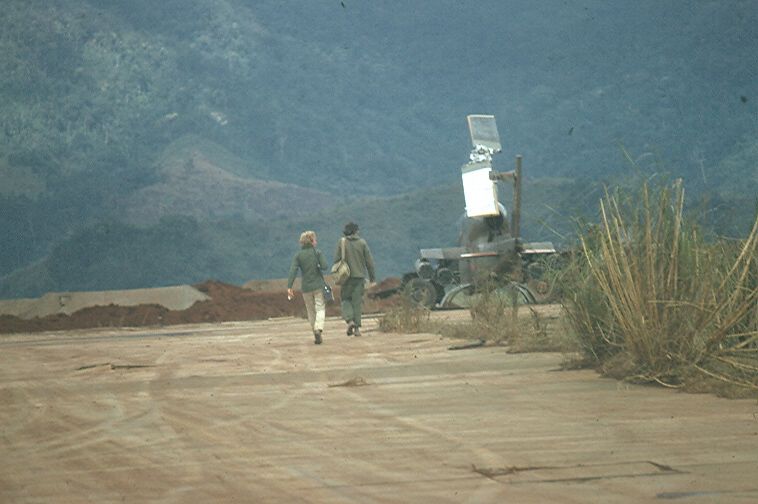
Left: "The "Yellow Brick Road" to "Emerald City" near the Rockpile.
Right: Reporters (read below) at Vandergrift.
My recollection was of all these civilian dressed college people, wearing khaki safari shirts, draped in expensive cameras and carrying notepads. Between Monday of February 1st and Sunday February 7th, I made not one entry into my day-date log/diary. I must have been too busy, scared or just too tired to document anything.
On February 8th, all the guns we had crews for lifted off of Quang Tri just before the slicks as the sun began to rise. As I recall, it was one of the few times Maj. Searcy was in the lead aircraft. According to one of the Dolphin AC's, he directed the flight to take up a "Military Crest" formation. There was an uncomfortable silence over the radio and nobody changed positions. Apparently, no one had ever heard of such a formation.
That morning, the massive movement began. I recall what an absolute logistical nightmare it was to get all those helicopters fueled, loaded and properly located prior to the "Big Dance." The convoy of mechanized vehicles and men moving west on QL-9 caused a huge dust cloud that enveloped the vehicles and road. The massing of men at Quang Tri, Vandergrif and Khe Sahn, lifting off on flights to begin the combat assaults into the newly designated fire support locations in Laos.
We were going "over the fence."
But not everyone. Apparently Congress or the President (Nixon) had declared that "No American combat personnel" were to cross over the Laotian border. There were big white signs to that effect, on QL-9, just west of Khe Sahn. "No American personnel beyond this point!"
It didn't apply to helicopter crews.
------------------------
End of Part 12 of 20 Parts.
Click on the beacon to go to Part 13

![]() Return to top of the Biography Page.
Return to top of the Biography Page.![]() Return to top of: Home Page.
Return to top of: Home Page.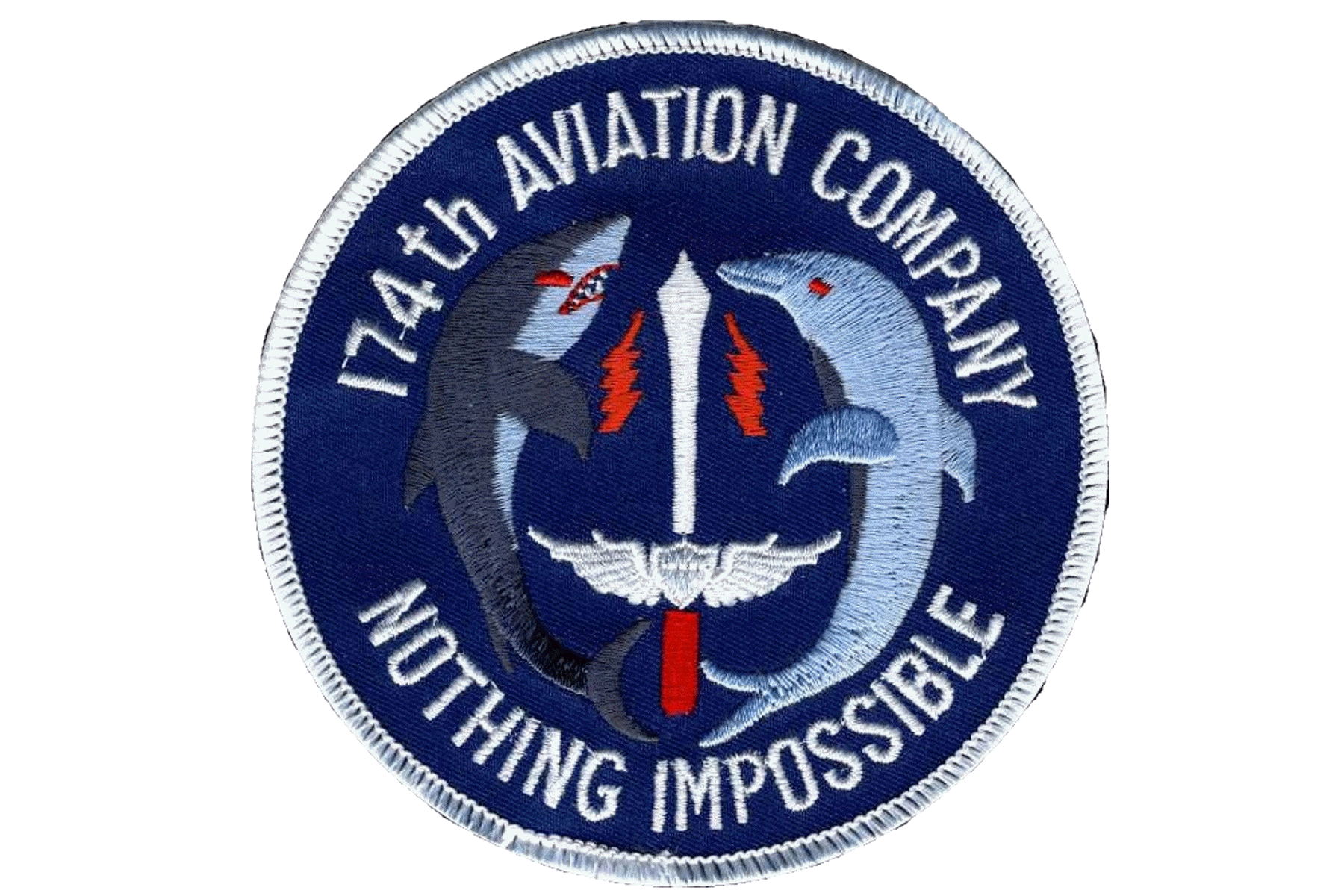

![]() Return to top of the Biography Page.
Return to top of the Biography Page.![]() Return to top of: Home Page.
Return to top of: Home Page.